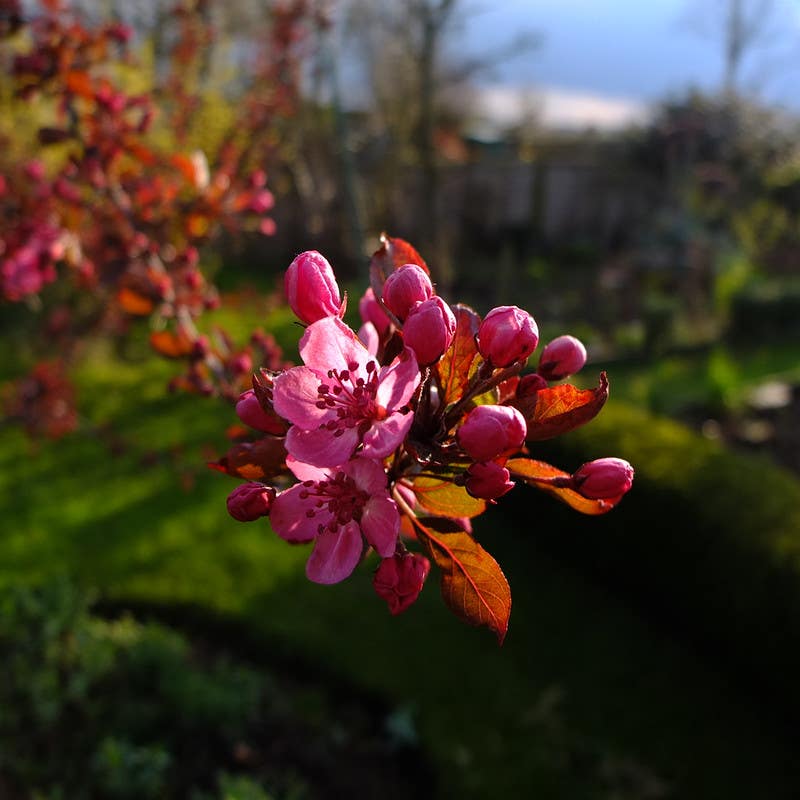‘Contorta’ Flowering Quince
We love ‘Contorta’ flowering quince (Chaenomeles speciosa ‘Contorta’) for its early bloom and its twisted branches, which lend it more interest out of flower than other quinces.
Common name: 'Contorta' flowering quince
Botanical name:Chaenomeles speciosa 'Contorta'
Virtues: Early spring bloom. Twisted branches that give it an interesting shape and offer great winter interest. This flowering quince stands out from other cultivars, which generally look awkward and twiggy most of the year—their redeeming visual quality being their early flowers. 'Contorta' remains fairly interesting because of its unique branch pattern.
Flowers: Peach/pink to white flowers appear in very early spring, before the leaves appear. A great candidate for forcing into bloom indoors in winter. Small greenish fruits appear in late summer and fall; these can be used to make preserves if harvested in mid-fall.
Foliage: Toothed, oval leaver emerge bronze and turn dark green. No fall color. The shrub is deciduous but some leaves may hold on through the winter.
Habit: Deciduous shrub to 4 feet tall and wide. Dramatically twisting, turning thorned branches.
Season: Early spring for flowers; winter for bare twisted branches.
Origin: The species is native to China.
Cultivation: Adaptable and easy to grow. Site in full to partial sun. More sun will promote better flowering. Tolerates dry soils. Requires good drainage. Leaves will yellow in soils with a high pH (alkaline). If necessary to control shape and size, prune after blooming, because flower buds are formed on the previous year's growth. Earlier pruning might remove them. Propagate by softwood cuttings. USDA Zones 4–8.
Garden writer Nancy Ondra talks about 'Contorta' on the Gardening Gone Wild blog and she's posted some excellent photos. (The post also includes recommendations for other twisting shrubs, including twisted hazel, or Harry Lauder's walking stick!)
___________________________________________________________
Love fantastic shapes? Check out Tricks With Trees, a guide to manipulating and pruning woody plants into interesting forms.
See more great shrubs with winter interest and early bloom in Wonders of the Winter Landscape.







